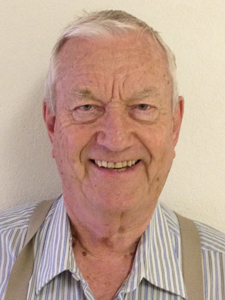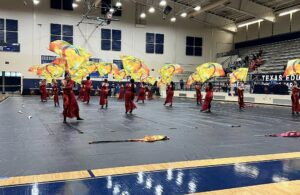- La Feria Community Holds Succesful Business Mixer Event
- Little Nashville to Take Place in Downtown Mercedes
- Lions Basketball Captures District Gold
- La Feria ISD Students Compete in Regional Chess Tournament
- Lions End First Half of 32-4A on a High Note
- La Feria ISD Held Another Successful Parent Conference
- Strong Appearance for Lions at Hidalgo Power Meet
- LFECHS Students Get to Meet Local Actress
- Students Participate in Marine Biology Camp
- Two LFECHS Students Qualify for All-State Band
“Low Probability, But It Just Takes One”
- Updated: June 19, 2015

Bill Keltner
That’s the word for the Hurricane season
The television studios of KGBT/TV served as the venue for this year’s National Weather Service Media Partners Hurricane Workshop. An impressive slate of NOAA and NWS meteorologists and weather professionals laid out the prospects for the 2015 hurricane season for the Rio Grande Valley and South Texas.
ACTION FOUR NEWS Chief Meteorologist Bryan Hale extended a cordial invitation to the assembled members of the Valley news media, and then introduced Barry Goldsmith, the key speaker of the day-long 2015 Hurricane Workshop.
In his opening remarks, Goldsmith, the Warning Coordination Meteorologist of the National Weather Service at the NWS office in Brownsville, set the tone for the program to follow:
Goldsmith said all the European and North American models for this summer’s tropical weather season point to a “normal to below normal” season. “But,” he cautioned, “it just takes one to make it a memorable year,” adding, “remember, the unforgettable storm named Beulah was only the second storm of the 1967 season coming in mid-September!”
He next reviewed the history of hurricanes affecting the lower Texas coast since the turn of the century.

Valley TV Meteorologists attend Hurricane Warning workshop: Oscar Sobrevilla, XHAB, Ch 7; Bryan Hale, KGBT TV, Ch 4; Tim Smith, KRGV TV, Ch 5.
“The records show that the most destructive hurricanes to impact the Rio Grande Valley occurred in September. The infamous Beulah of 1967 and the destructive ‘no-name’ storm of 1933 were both September storms.” he said.
“As for this year,” Goldsmith continued, “we are probably looking for 6-11 storms in the Gulf of Mexico and the North Atlantic impressive enough to get an identifying name. Of those named storms, perhaps 3-6 will reach hurricane strength and perhaps make a landfall somewhere in the Gulf or Eastern seaboard. during the season.
Now the big question: What are the chances of a major, destructive storm Category 2 or above forming during the June-till-November hurricane season? “The models are giving that chance as a ‘0 to 2’ possibility,” he said.
“But don’t become complacent—that is the greatest fear of the people who forecast storms and those who must react to imminent danger in the target area.”

Bryan Hale welcomes NWS and Valley media to KGBT TV studios.
Goldsmith gave the reasons for this low prediction of 2015 tropical storms. “First of all we have cooler water in the North Atlantic, the Gulf of Mexico and the Caribbean Sea,” he said.” He continued, “There is now a persistent wind shear knocking the tops off threatening build-up of cloud formations, then we have the calming effect this year of the “El Nino” in the South Pacific which affects our weather. There are also different oscillations in the wind patterns that tend to assuage potential, threatening storm build-ups.”
The speaker warned against only taking actions against the threat of high winds. “The greatest damage and loss of life during a hurricane is from the storm surge and flooding inland. He urged all to pay attention to a storm surge warning as well as the storm peak wind warning.
“My best advice is to prepare for a ‘reasonable worst case scenario,’” he said. “By paying attention to the warnings of potential impact, this allows the people to prepare to be proactive in their decision—And be safe and not sorry.”
Goldsmith concluded with this advice: “Remember, the entire population of a landfall area is in a high danger zone—the danger is the same for all. However, the risk to people is individual. This takes into account the individual’s location, preparedness, and structure strength. Over that we have some control—just remember this slogan: “Run from water, hide from the wind.”
The meteorologist said the National Weather Service is doing its best to protect the people during the hurricane season.
“We are getting better,” he said, “and by 2017 we’ll have some new equipment on-line to make our predictions even more accurate and farther out than 2-3 days. During the season, pay close attention to all advisories and warnings the National Weather Service puts out on radio and television. Take them seriously. In the meantime, just remember, it just takes one to make it a memorable hurricane season.”

Valley media listen to latest season forecast from National Weather Service.


